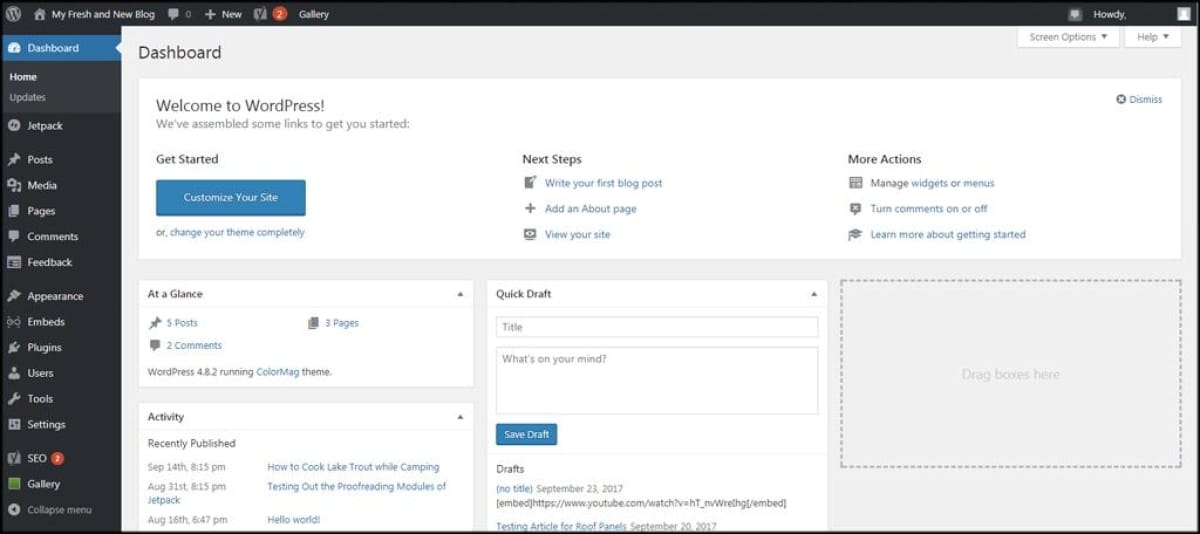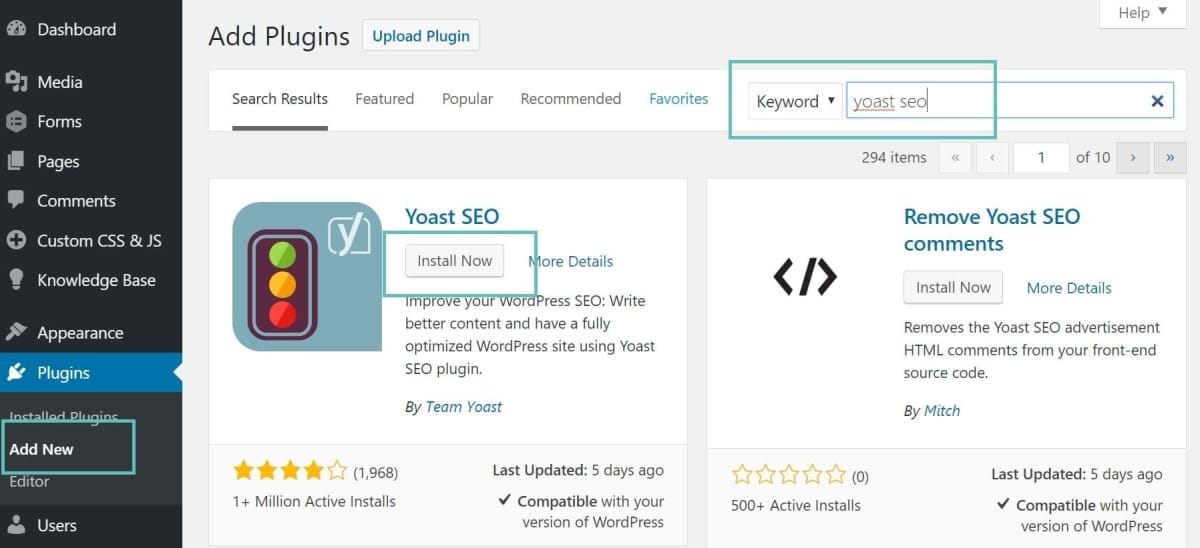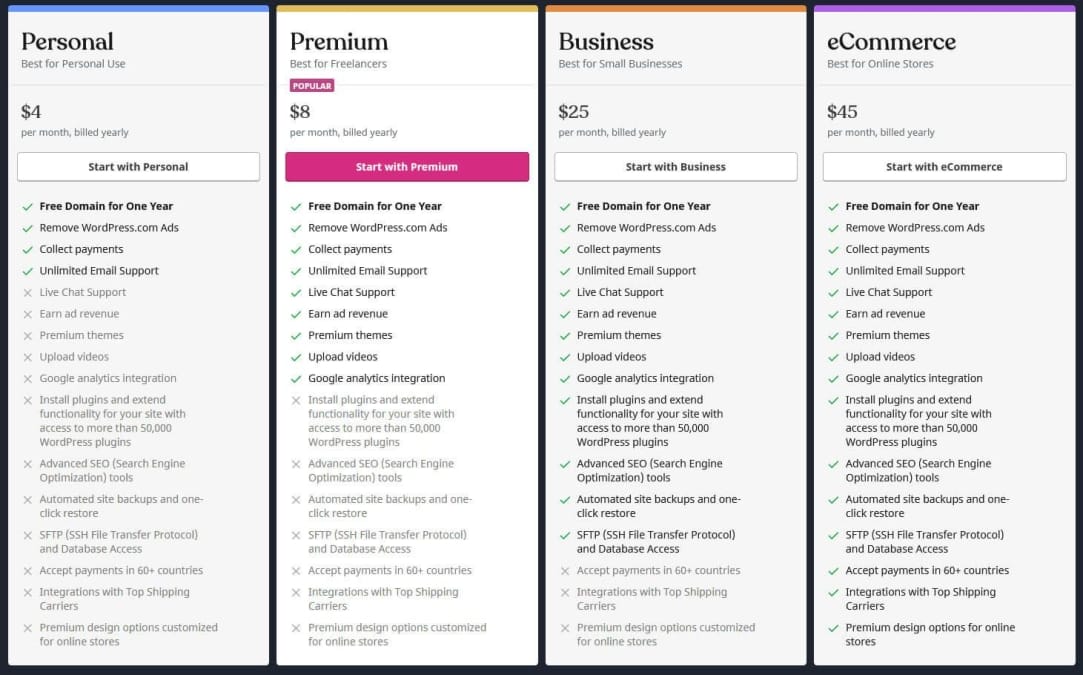Choosing the right WordPress template can make a critically important difference in how your business is perceived online. I’ve seen firsthand how the right design not only enhances user experience but also drives engagement and conversions. In this article, I’ll share everything you need to know about selecting and customizing WordPress templates to suit your business needs.
We’ll cover key aspects such as:
- Essential features to look for in a template
- How to assess template responsiveness for mobile users
- Tips for customizing templates without coding
- Best practices for SEO-friendly designs
By the end of this guide, you’ll be equipped with the knowledge to choose a WordPress template that not only reflects your brand but also supports your business goals.
Table of Contents
- Understanding WordPress Templates and Why They Matter for Your Business
- Choosing the Right WordPress Template: Key Features to Look For
- Customizing Your WordPress Template: Tips for a Unique Business Identity
- Optimizing Your WordPress Template for SEO and Performance
- Common Mistakes to Avoid When Using WordPress Templates for Your Business
- Q&A
- The Conclusion

Understanding WordPress Templates and Why They Matter for Your Business
When I first started building websites for clients, understanding WordPress templates was a game-changer. A WordPress template, often referred to as a theme, dictates the visual appearance and layout of your site. It controls everything from the color scheme and typography to the arrangement of various elements like headers, footers, and sidebars. Choosing the right template can streamline your design process, allowing you to focus on creating valuable content and delivering a seamless user experience.
One of the main reasons templates matter for your business is thier impact on user experience and functionality. A well-designed template ensures that your website is not only aesthetically pleasing but also intuitive to navigate. This can substantially reduce bounce rates and increase visitor engagement. Additionally, many templates come with built-in features such as responsive design, SEO optimization, and compatibility with popular plugins, which can enhance your site’s performance without requiring extensive customization.
From my experience, businesses benefit greatly from the flexibility that WordPress templates offer. Whether you’re running a small blog or a large e-commerce site, there’s a template tailored to your specific needs. Here are a few key benefits I’ve observed:
- cost-Effective: Many high-quality templates are available for free or at a low cost, making professional website design accessible to businesses of all sizes.
- Customization: Most templates are highly customizable, allowing you to tweak colors, layouts, and functionalities to match your brand identity.
- Time-Saving: With pre-designed structures and elements, you can launch your website much faster compared to building from scratch.
To help businesses make informed decisions, I’ve compiled a simple table outlining different types of WordPress templates and their ideal use cases:
| Template Type | Best For | Key Features |
|---|---|---|
| Business | Corporate websites, portfolios | Professional layouts, service listings, contact forms |
| E-commerce | Online stores, product showcases | Shopping carts, product filters, payment integration |
| Blog | Content creators, news sites | Readable layouts, comment systems, social media integration |
| magazine | Online publications, media outlets | Multiple post formats, ad placements, multimedia support |

Choosing the Right WordPress Template: Key features to Look For
When selecting a WordPress template,I prioritize responsive design. in today’s mobile-driven world, a template that looks great on all devices is essential. I’ve seen too many websites lose engagement simply because their layout breaks on smartphones or tablets. Ensuring that your template automatically adjusts to different screen sizes not only enhances user experience but also positively impacts your SEO rankings.
Another feature I look for is customization flexibility.A template should offer a range of customizable options without requiring extensive coding knowledge. I appreciate templates that come with multiple layout choices, color schemes, and typography settings. This level of flexibility allows businesses to maintain a unique brand identity while making necessary adjustments as their needs evolve.
Performance and speed are critical factors in my decision-making process. A well-optimized template ensures fast loading times, which is crucial for retaining visitors and improving search engine visibility.I often evaluate the template’s code quality and compatibility with popular caching plugins to ensure it doesn’t hinder site performance.
Lastly, I consider the quality of support and updates. A reliable support team and regular updates indicate that the template is actively maintained, which is vital for security and compatibility with the latest WordPress versions. I usually opt for templates from reputable developers who offer thorough documentation and prompt assistance, ensuring that any issues can be swiftly resolved.

Customizing Your WordPress Template: Tips for a Unique Business Identity
When I set out to customize a WordPress template, my first priority is ensuring it reflects the core values of the business. Choosing the right base theme is crucial; I look for themes that offer flexibility and align with the brand’s vision. From there,I dive into modifying the layout to highlight key aspects,such as services or products,ensuring that the website not only looks unique but also functions seamlessly for the intended audience.
Color schemes and typography play a significant role in establishing a brand’s identity. I carefully select colors that resonate with the brand’s personality and ensure they complement each other across the site. Similarly,choosing the right fonts enhances readability and conveys the right tone. Here are a few elements I focus on:
- Consistent color palette
- Readable and brand-appropriate fonts
- Custom graphics and imagery
- Unique logo placement and design
Extending functionality through plugins and widgets is another strategy I employ to make a template stand out. Whether it’s integrating a custom contact form, adding social media feeds, or optimizing for SEO, the right plugins can enhance both the user experience and the site’s performance. I prioritize lightweight plugins to maintain speed and ensure compatibility with the chosen theme.
testing and refining the customized template is essential. I perform thorough checks across different devices and browsers to guarantee responsiveness and user-friendly navigation. Gathering feedback from colleagues or clients helps identify areas for improvement. Here’s a quick checklist I use before finalizing the design:
- Responsive design across all devices
- Fast loading times
- Intuitive navigation structure
- Accessibility compliance

Optimizing Your WordPress Template for SEO and Performance
When I set out to enhance a website’s visibility, the first step I take is selecting a lightweight, SEO-optimized theme. A well-coded theme not only speeds up load times but also ensures that search engines can crawl your site efficiently. I frequently enough prioritize themes that follow best practices, such as clean code structure and minimal reliance on external scripts. This foundation is crucial for both performance and search engine ranking.
Optimizing images and media assets is another area I focus on to boost performance. Large images can slow down your site, negatively impacting user experience and SEO. I use tools like ImageOptim and smush to compress images without sacrificing quality. Additionally, implementing lazy loading ensures that media is only loaded when it enters the viewport, further enhancing load times.
Ensuring your website is mobile-responsive is essential in today’s digital landscape. I make it a priority to use responsive design techniques that adapt seamlessly to various screen sizes and devices. This not only improves user experience but also aligns with search engine algorithms that favor mobile-friendly sites. Testing across multiple devices helps me identify and resolve any layout issues that could hinder performance.
leveraging caching and minimizing the use of plugins can significantly improve site performance. I implement caching solutions like WP Super Cache or W3 Total Cache to reduce server load and speed up page delivery. Additionally,I carefully evaluate each plugin’s necessity,opting for those that are lightweight and well-maintained to prevent conflicts and slowdowns.
| Optimization Technique | Benefits |
|---|---|
| Lightweight Themes | Faster load times, better SEO |
| image Compression | Reduced bandwidth usage, improved speed |
| Responsive Design | Enhanced user experience, higher mobile rankings |
| Caching | Decreased server load, quicker page loads |

Common Mistakes to Avoid When Using WordPress Templates for Your Business
One of the most frequent errors I encounter is choosing a template based solely on aesthetics without considering functionality. A visually appealing design can attract visitors, but if it doesn’t align with your business goals or support essential features, it can hinder your website’s performance. Always evaluate whether the template offers the necessary customization options and integrates seamlessly with your required plugins before making a decision.
Another mistake is over-customizing the template without a clear plan. while it’s tempting to tweak every aspect to make your site unique, excessive modifications can lead to slower load times and compatibility issues during updates.I reccommend maintaining a balance by only customizing elements that enhance your brand identity and ensuring that your changes are well-documented for future reference.
Neglecting mobile responsiveness is a critical oversight. With a significant portion of web traffic coming from mobile devices, it’s essential that your chosen template is fully responsive. ensure that the template adapts seamlessly to different screen sizes and provides a user-friendly experience across all devices. Failing to do so can result in a loss of potential customers and negatively impact your search engine rankings.
Lastly, overlooking SEO best practices when selecting and configuring your template can severely limit your online visibility. I always check if the template is optimized for SEO, including proper use of heading tags, fast loading speeds, and clean code. Here’s a quick reference table to highlight common SEO-related aspects to consider:
| Aspect | What to Look For |
|---|---|
| Loading Speed | lightweight design with optimized assets |
| Schema Markup | Built-in support for structured data |
| Clean Code | Minimal and well-organized HTML/CSS |
| SEO Plugins Compatibility | Seamless integration with popular SEO tools |
Q&A
I frequently enough explain that WordPress templates are specific page layouts within a theme.While a theme controls the overall design and functionality of your website, templates allow you to customize individual pages. This distinction is crucial for business owners who need flexibility in presenting different types of content without altering the entire site’s appearance.
Selecting the right template starts with identifying your business goals and the functionality you require. I recommend looking for templates that offer responsive design, SEO-friendly features, and easy customization options. Additionally, consider the aesthetics and whether the template aligns with your brand identity.
Yes, there are several free templates that offer robust features suitable for businesses.I suggest exploring the WordPress repository and filtering by ratings and active installations. While free templates can be a great starting point, ensure they are regularly updated and supported by the developers to maintain security and functionality.
Absolutely. Modern WordPress templates come with intuitive customization options through the WordPress Customizer or built-in theme options panels. Additionally, page builders like Elementor or beaver Builder enable you to design pages visually, eliminating the need for coding knowledge.
An SEO-friendly template should have clean, semantic code, fast loading times, and mobile responsiveness.I also look for compatibility with popular SEO plugins like Yoast SEO and built-in options for proper heading structures and metadata management. These factors collectively enhance your site’s search engine visibility.
Regular updates are essential for security and compatibility. I recommend checking for updates at least once a month or whenever the theme developer releases a new version. Before updating, always back up your site to prevent any potential issues during the update process.
Yes, you can switch templates without losing your content. However, the layout and styling might change, so it’s important to preview the new template and adjust settings as needed. I always advise backing up your site before making significant changes to ensure you can restore it if necessary.
Premium templates frequently enough come with advanced features, dedicated support, and regular updates.They provide greater customization options and are typically optimized for performance and security.investing in a premium template can save time and ensure a professional look, which is essential for establishing credibility in your business.
The Conclusion
In my experience, selecting the right WordPress template is crucial for your business website‘s effectiveness. A thoughtfully chosen template not only enhances the user experience but also supports SEO optimization and ensures responsive design across all devices. By focusing on customizable themes and integrating essential plugins,you can create a website that truly reflects your brand and meets your customers’ needs. Investing time in understanding your options will undoubtedly pay off in establishing a robust online presence.







